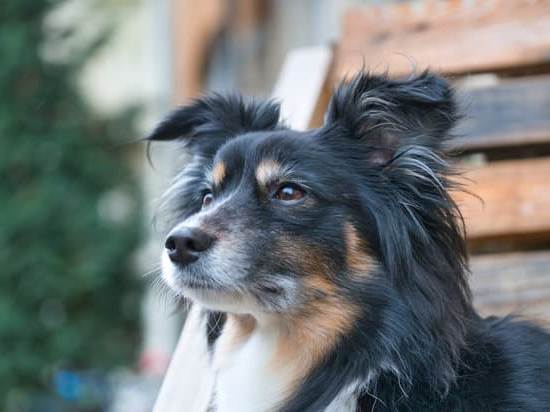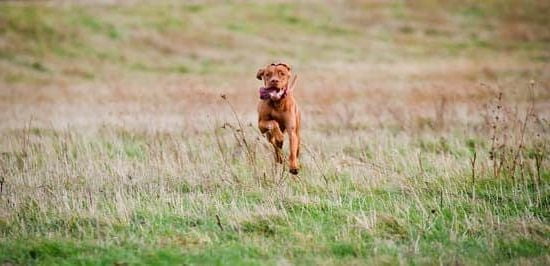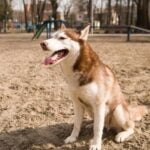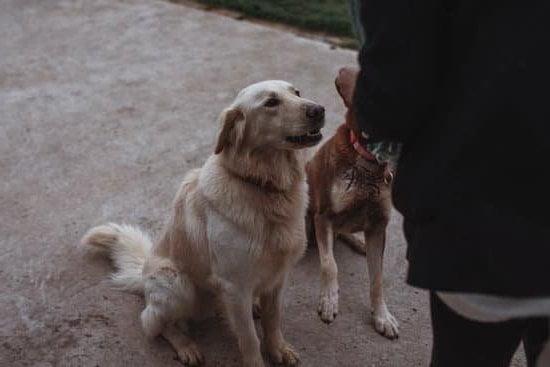Are you tired of your furry friend constantly jumping on you and your guests? In this article, we will explore how to train a dog from jumping. Jumping behavior in dogs is a common issue that many pet owners struggle with. Whether it’s an excited greeting or an attempt to get attention, jumping can be disruptive and even dangerous. Fortunately, with the right training techniques and consistency, you can address this behavior and enjoy a well-behaved canine companion.
Understanding the underlying reason behind your dog’s jumping behavior is crucial in effectively addressing the issue. It could be a manifestation of excitement, anxiety, or simply seeking attention. By pinpointing the cause, you can tailor your training approach to better suit your dog’s specific needs.
Setting boundaries and rules for your dog is also essential in curbing their jumping habit. Consistency and patience in training play a key role in modifying this behavior, as well as positive reinforcement techniques.
In the following sections, we will delve into various strategies such as basic obedience training, redirection, and distraction methods to prevent jumping. Additionally, seeking professional help if needed will ensure that you receive expert guidance and support throughout the training process. By adhering to these effective training methods, you can look forward to enjoying the company of a well-behaved and trained dog without any jumping issues.
Understanding the Reason Behind the Jumping Behavior
One of the first steps in addressing jumping behavior in dogs is to understand the reason behind this action. Dogs jump for a variety of reasons, and it’s important to determine the underlying cause in order to effectively address the behavior.
Some common reasons for jumping include excitement, seeking attention, or simply as a way to greet their owners or other people. By identifying the trigger for your dog’s jumping behavior, you can tailor your training approach to address the specific cause.
To better understand why your dog is jumping, consider the circumstances surrounding the behavior. Does your dog jump when guests come over? Is it during playtime or when you arrive home from work? Understanding these patterns can help you identify the root cause of the jumping behavior. Additionally, consider your dog’s body language and any expressions of excitement or anxiety that may accompany their jumping.
Once you have a better understanding of why your dog is jumping, you can then implement specific strategies and techniques to address this behavior. Whether it’s through setting boundaries, positive reinforcement, obedience training, or redirection techniques, understanding the reason behind the jumping behavior serves as a crucial first step in training your dog to stop this unwanted habit.
- Identify specific triggers for your dog’s jumping
- Observe patterns and circumstances surrounding the behavior
- Pay attention to your dog’s body language and emotional state while jumping
Setting Boundaries and Rules for Your Dog
Establishing Clear Boundaries
One of the key elements in training a dog to stop jumping is setting clear boundaries and rules. This means teaching your dog what behavior is acceptable and what is not. For instance, if your dog tends to jump on guests when they come through the door, it’s important to establish a rule that jumping is not allowed. Consistency is key in enforcing these boundaries, so make sure everyone in the household is on board with the rules.
Using Commands and Signals
Using verbal commands and hand signals can also help in establishing boundaries. When your dog exhibits jumping behavior, use a firm “no” along with a hand signal such as holding your palm out towards the dog. This helps communicate to the dog that jumping is not acceptable. Consistently using these commands and signals will reinforce the boundaries you have set.
Providing Alternative Behaviors
In addition to setting boundaries, it’s important to provide alternative behaviors for your dog. For example, if your dog tends to jump when excited, redirect that energy into something more appropriate such as sitting or offering a toy. By providing alternative behaviors, you are giving your dog an outlet for their energy while also reinforcing the rules you’ve set regarding jumping.
By implementing these strategies for setting boundaries and rules, you can effectively address jumping behavior in your dog and lay the foundation for successful training.
Positive Reinforcement Techniques to Discourage Jumping
Jumping behavior in dogs can be a common and frustrating issue for many pet owners. One effective way to address this problem is through positive reinforcement techniques. Positive reinforcement focuses on rewarding the dog for good behavior rather than punishing them for bad behavior. This method helps to encourage the dog to repeat desirable actions and gradually eliminates unwanted behavior like jumping.
One technique of positive reinforcement to discourage jumping is to use treats as rewards. When your dog approaches you without jumping, immediately give them a treat as a form of positive reinforcement. This creates a connection in your dog’s mind between not jumping and receiving a reward, which encourages them to continue the desired behavior.
Another positive reinforcement technique is to use verbal praise and affection when your dog refrains from jumping. Dogs respond well to verbal cues and physical affection, so when they approach you calmly without jumping, be sure to praise them with words like “good boy/girl” or give them pets and belly rubs as a form of reward.
Consistency is key when using positive reinforcement techniques. Make sure that every member of the household is on board with this training method and applies it consistently. In time, your dog will learn that not jumping leads to positive outcomes, reinforcing the desired behavior. Be patient and consistent with these techniques, and you will likely see improvement in your dog’s jumping behavior over time.
Basic Obedience Training to Stop Jumping
When it comes to training your dog to stop jumping, basic obedience training is an essential part of the process. Teaching your dog basic commands such as “sit”, “stay”, and “down” can be highly effective in preventing jumping behavior. These commands provide your dog with alternative behaviors to jumping, and when practiced consistently, they can help reinforce good manners and discipline.
Teaching the “Sit” Command
One of the most useful commands for preventing jumping is teaching your dog to sit on command. Start by holding a treat in front of your dog’s nose and then slowly raise it above their head while saying, “sit”. As their head follows the treat, their bottom should naturally lower into a sitting position. Once they are sitting, give them the treat and plenty of praise.
Reinforcing the “Stay” and “Down” Commands
In addition to teaching the “sit” command, reinforcing the “stay” and “down” commands can also be beneficial in stopping jumping behavior. Start by practicing these commands in a quiet environment with minimal distractions. Gradually increase the level of difficulty by adding more distractions or distance between you and your dog.
By incorporating these basic obedience training techniques into your daily routine with your dog, you can effectively address their jumping behavior while ensuring that they are well-behaved and obedient. With consistency and patience, you’ll soon enjoy the company of a well-trained pet without any jumping issues.
Using Redirection and Distractions to Prevent Jumping
When it comes to preventing jumping behavior in dogs, using redirection and distractions can be an effective technique. Redirection involves diverting your dog’s attention from the behavior you want to discourage by offering an alternative activity or focus. For example, when your dog jumps on guests, you can redirect their attention by asking them to perform a simple command like “sit” or “stay,” rewarding them when they comply.
Another form of redirection is offering a favorite toy or treat as a distraction. By giving your dog something else to focus on, you can effectively prevent them from jumping on people or furniture. This technique helps to reinforce positive behaviors through rewards and keeps your dog engaged in activities that are more appropriate.
In addition to redirection, using distractions such as engaging in playtime, going for a walk, or practicing obedience commands can also help deter jumping behavior. The key is to engage your dog in mentally stimulating activities that redirect their energy and focus. By consistently providing alternative outlets for their energy and enthusiasm, you can effectively prevent jumping and instill more desirable behaviors in your dog.
| Redirection Techniques | Effectiveness |
|---|---|
| Redirecting attention with commands like “Sit” or “Stay” | Highly effective when consistently applied |
| Offering a favorite toy or treat as a distraction | Effective in reinforcing positive behaviors |
| Engaging in playtime, going for walks, or practicing obedience commands | Deters jumping behavior by redirecting energy and focus |
Consistency and Patience in Training
Training a dog to stop jumping requires consistency and patience from the owner. It is important to have a clear understanding of the goal and to stick to the training plan without wavering. Here are some key points to keep in mind while working on training your dog:
- Stick to the plan: Consistency is key when it comes to dog training. Set clear rules and boundaries for your pet and make sure everyone in the household follows them consistently. Inconsistency can confuse the dog and hinder progress in stopping jumping behavior.
- Be patient: Changing a dog’s behavior takes time and effort. It is important for owners to remain patient throughout the training process, even if progress seems slow at times. Reacting negatively or becoming frustrated with the dog can have a negative impact on the training process.
- Use positive reinforcement: Rewarding your dog for good behavior is an essential part of training. Positive reinforcement, such as treats, praise, or toys, can motivate your dog to follow commands and discourage jumping.
By being consistent, patient, and using positive reinforcement techniques, owners can effectively train their dogs to stop jumping and enjoy a well-behaved pet. Remember that every dog is different, so it may take some time to find the right approach that works for your specific pet.
Seeking Professional Help if Needed
In some cases, training a dog not to jump may require the expertise of a professional. If your dog shows aggression when trying to deter jumping behavior, seeking the help of a certified dog trainer or animal behaviorist is essential. These professionals have the knowledge and experience to assess the root cause of your dog’s jumping behavior and provide personalized training techniques to address the issue.
When looking for professional help, it is crucial to find a reputable and qualified trainer or behaviorist. Look for certifications from recognized organizations such as the Certification Council for Professional Dog Trainers (CCPDT) or the International Association of Animal Behavior Consultants (IAABC). Additionally, consider asking for recommendations from friends, family, or your veterinarian.
Professional trainers and behaviorists can also offer valuable advice on identifying triggers that lead to jumping behavior in your dog. By understanding these triggers, you can implement preventive measures or modify your dog’s environment to reduce opportunities for jumping. This customized approach can greatly improve the effectiveness of training and ultimately lead to a well-behaved and obedient pet.
| Professional Help | Key Points |
|---|---|
| Certifications | Certification Council for Professional Dog Trainers (CCPDT), International Association of Animal Behavior Consultants (IAABC) |
| Recommendations | Ask for recommendations from trusted sources such as friends, family, or veterinarians. |
Conclusion
In conclusion, training a dog from jumping may require some effort and patience, but the rewards of having a well-behaved and trained dog without jumping issues are well worth it. By understanding the reasons behind the jumping behavior and setting boundaries and rules for your dog, you can effectively address this issue. Additionally, using positive reinforcement techniques, basic obedience training, redirection, and consistency in training are all valuable tools to discourage jumping behavior in your dog.
It’s important to remember that seeking professional help is always an option if you find that you’re struggling to train your dog from jumping on your own. Professional trainers can provide additional insight, guidance, and support to help you overcome this challenging behavior. It’s crucial to remain patient throughout the training process, as consistency and perseverance will ultimately lead to success in modifying your dog’s behavior.
Ultimately, with dedication and effort, you can enjoy the company of a well-behaved and trained dog without jumping issues. Building a strong bond with your furry friend through effective training will not only improve their behavior but also enhance your relationship with them. So don’t get discouraged – with the right approach and mindset, you can successfully train your dog from jumping.
Frequently Asked Questions
How Do You Train a Dog to Not Jump on You?
Training a dog to not jump on you requires consistent and positive reinforcement. One method is to turn away and ignore the dog when it jumps, only giving attention when all four paws are on the ground. Another approach is to teach the dog an alternative behavior, like sitting, and rewarding that instead of jumping.
Will My Dog Grow Out of Jumping Up?
Whether or not a dog will grow out of jumping up depends on how consistently the behavior is addressed. Without proper training, a dog may continue jumping up as it sees fit. However, with consistent and positive reinforcement training, most dogs can learn to greet people without jumping.
How Do I Train My Dog Not to Jump on the Counter?
To train a dog not to jump on the counter, it’s important to keep counters clear of enticing objects and use barriers such as baby gates or deterrents like loud noises or scent repellents. In addition, providing the dog with alternative activities or mental stimulation can redirect their focus away from the counter.
Consistency and patience are key in teaching this boundary with your pet.

Welcome to the blog! I am a professional dog trainer and have been working with dogs for many years. In this blog, I will be discussing various topics related to dog training, including tips, tricks, and advice. I hope you find this information helpful and informative. Thanks for reading!





